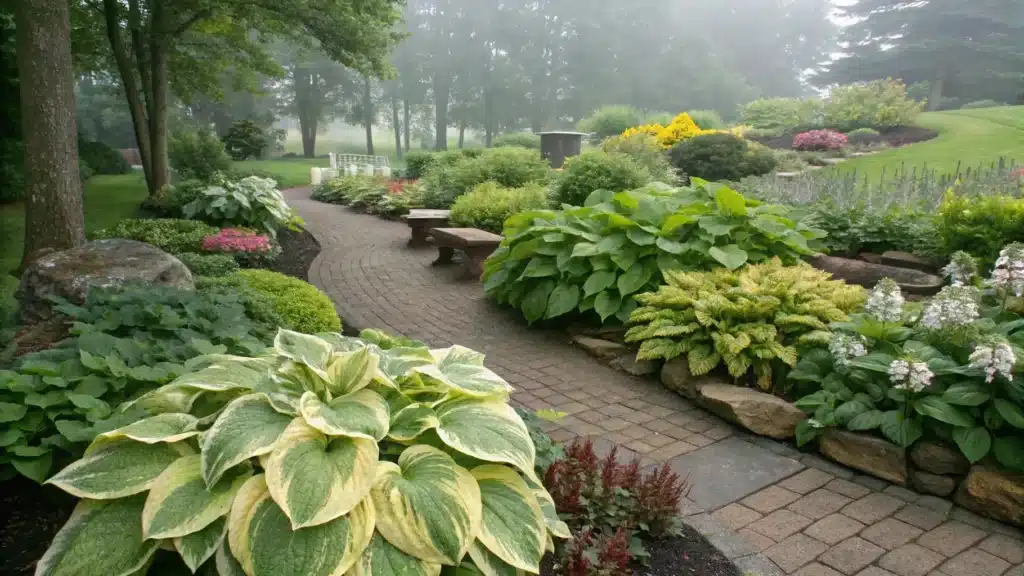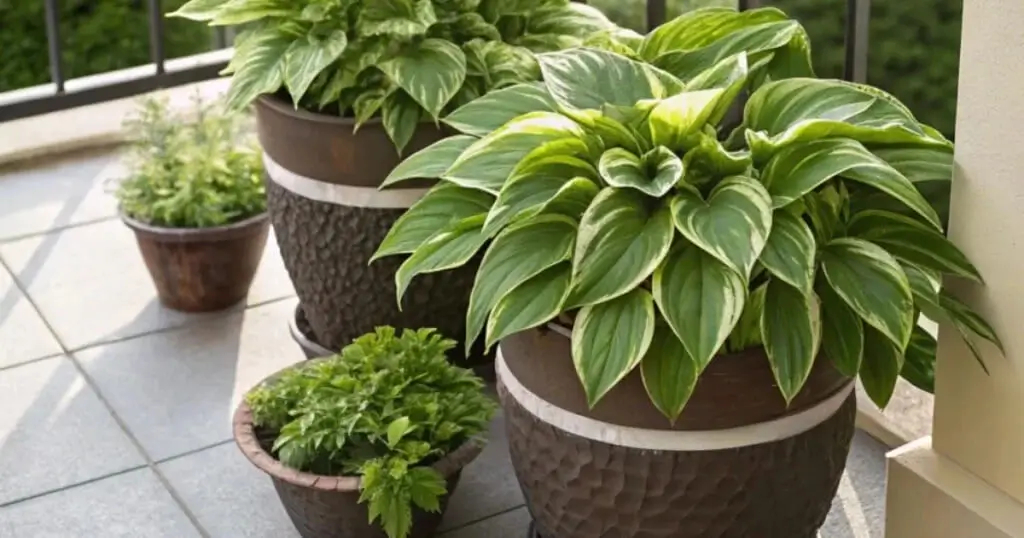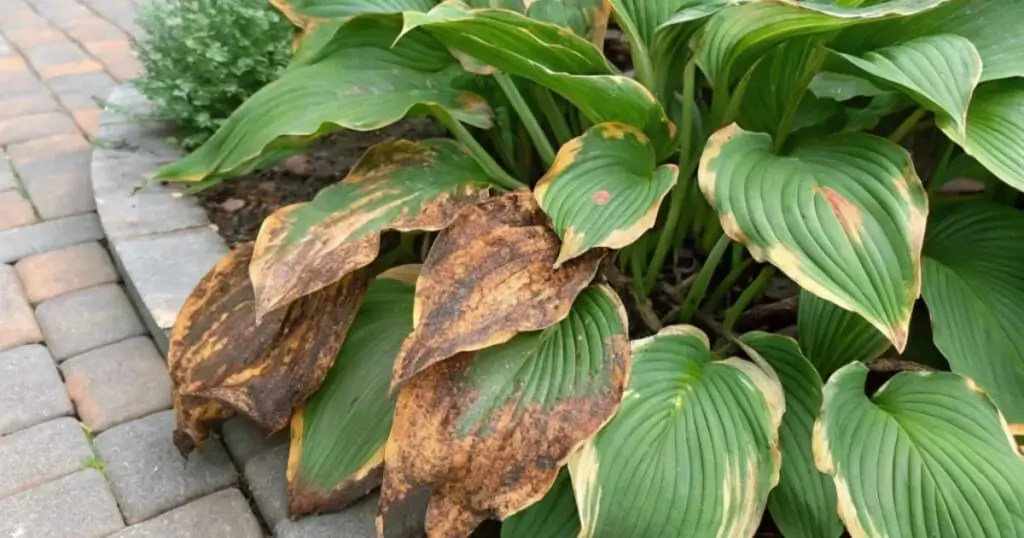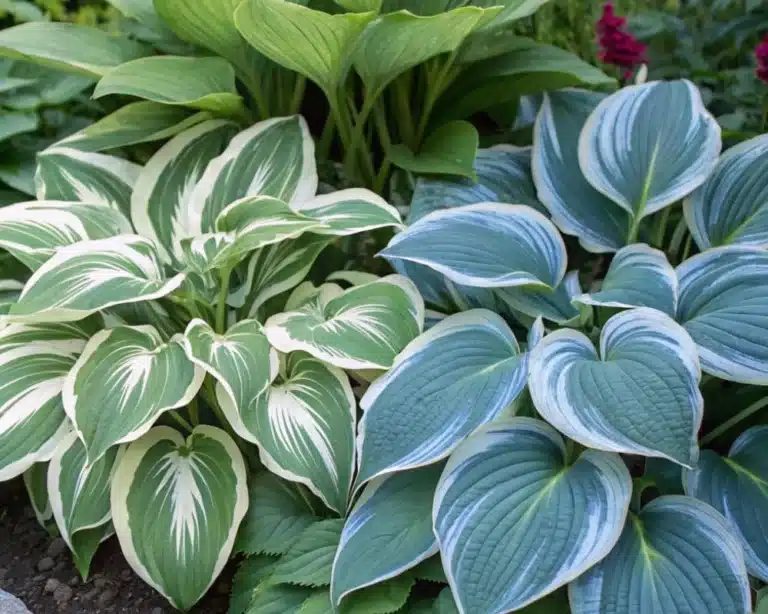Hostas, often a go-to for gardeners looking to spruce up shady spots, are loved for their lush leaves and ease of care. Whether you’re a green thumb or just starting out, these plants can be a great addition to your garden. They come in a bunch of varieties, so there’s something for every taste and space. Let’s dive into some handy tips and tricks to get the most out of these shade-loving plants.
Table of Contents
Understanding Hosta Varieties
Exploring Different Leaf Colors and Textures
These plants are celebrated for their diverse and vibrant leaf colors, ranging from deep greens to stunning blues and even golds. Variegated types stand out with their unique patterns and combinations of hues. The texture of a leaf can vary, offering smooth, puckered, or veined surfaces that add visual interest to any garden. Some varieties, like the “Eola Sapphire,” feature striking metallic blue-green leaves, while others boast rich variegation with contrasting edges.
Choosing the Right Size for Your Garden
When selecting a variety, size matters. These plants can be petite, perfect for edging or container gardens, or they can grow into large, dramatic specimens that dominate a shaded corner. Smaller varieties, such as “Curly Fries,” are ideal for compact spaces, while larger species, like the “Olive Bailey Langdon,” can reach impressive heights and widths, making them a focal point in a landscape.
Popular Varieties for Shade Gardens
- Hadspen Blue – Known for its steel blue-gray leaves and slug resistance, this variety thrives in part to full shade.
- Cherry Berry – Features lance-shaped leaves with dark green margins and striking red stems that produce purple flowers.
- Rosedale Golden Goose – Offers large, textured leaves with a chartreuse hue, perfect for adding a splash of color to shaded areas.
These plants are not just foliage; they are a gardener’s palette, offering endless possibilities for creating beautiful, shaded retreats. Whether you’re drawn to the bold blues of a “Hadspen Blue” or the delicate variegation of a “Cherry Berry,” there’s a variety to suit every garden’s needs.
Planting for Optimal Growth
Selecting the Perfect Location
These plants thrive in shady areas but can handle some morning sun. Avoid spots with harsh afternoon light as it can scorch their leaves. The best locations are under tree canopies or in shade gardens where they can enjoy dappled sunlight.
Preparing the Soil
For optimal growth, plant them in moist, well-drained soil. Heavy clay isn’t ideal, so mix in organic matter like compost to improve drainage. It’s important for the soil surface to stay moist but not waterlogged, promoting healthy root growth.
Spacing and Planting Techniques
When planting, dig holes as deep as the root ball and twice as wide. Ensure each plant has enough space to grow, generally 15 to 30 inches apart, depending on the variety. Place the crowns at soil level and fill in with enriched potting soil. After planting, water thoroughly to help settle the soil around the roots.
Planting on a cloudy day or late in the afternoon can help reduce transplant shock and moisture loss. Ensure they have room to grow and flourish in your garden.
Caring for Your Hosta Plants
Watering and Fertilizing Tips
Keeping these plants well-hydrated is crucial, but don’t overdo it. Water them deeply once a week, more often if it’s blazing hot outside. They dislike soggy feet, so make sure the soil drains well. In the spring, give them a boost with a balanced fertilizer. But lay off the feed in late summer to avoid frost damage.
- Water once a week, more in hot weather
- Ensure soil is well-drained
- Fertilize in spring, not late summer
Managing Pests and Diseases
Slugs and deer can be a nuisance. To keep these uninvited guests away, try organic deterrents. Beer traps, crushed eggshells, or coffee grounds can help with slugs. For deer, consider a barrier or repellents. Watch out for Hosta Virus X, which can cause funky leaf forms and plant loss.
- Use beer traps or eggshells for slugs
- Set up barriers for deer
- Watch for signs of Hosta Virus X
Seasonal Care and Maintenance
As the seasons change, so should your care routine. In the fall, cut back the foliage to prevent pests from settling in. A layer of mulch helps protect roots during winter. In spring, remove the mulch to let the soil breathe and get ready for new growth.
- Trim foliage in fall
- Mulch in winter
- Remove mulch in spring
Whether you’re dealing with potted or container-grown specimens, these care tips will keep your plants thriving. Remember, a little attention goes a long way in preventing issues and keeping your garden lush.
Designing with Hostas in Your Garden

Creating Stunning Shade Garden Combinations
These plants are a fantastic choice for creating lush, vibrant shade gardens. Their bold leaves can contrast beautifully with more delicate plants like ferns or astilbe. Consider pairing them with shade-loving companions such as spring bulbs or bleeding hearts to create a garden that thrives in low light. The key is to balance sizes and textures—a large variety like ‘Empress Wu’ might overshadow smaller plants, so choose wisely.
Container Gardens
Container gardening is a great way to add greenery to patios or small spaces. When selecting varieties for pots, choose those that stay compact. Fragrant types with their tall flower stalks can add both scent and visual interest to your containers. Remember to use well-draining soil and keep the soil consistently moist, but not waterlogged.

Incorporating into Landscape Design
Incorporating these plants into your landscape design can bring a sense of cohesion and flow. Use them as ground cover under trees or alongside pathways. Their varied leaf shapes and colors can create a dynamic visual interest throughout the seasons. Hostas with white flowers are particularly striking in moonlight gardens, where they can reflect the soft glow of the moon. Additionally, fragrant hostas can enhance the sensory experience of your garden. For a touch of elegance, consider combining them with Japanese Magnolia trees for a stunning display.
Troubleshooting Common Problems

Identifying and Treating Hosta Virus X
Hosta Virus X (HVX) is a sneaky little problem that can really mess up your plants. It shows up as odd patterns on the leaves—think blotchy or streaky colors that aren’t normal. If you notice these symptoms, it’s crucial to separate the infected plant from the rest immediately. Sadly, there’s no cure, so you’ll need to remove and destroy the affected hostas to prevent the virus from spreading. Always clean your tools after handling these plants to avoid transferring the virus.
Preventing and Managing Hosta Scorch
Leaf burn, also known as hosta scorch, happens when your plant gets too much sun or not enough water. You’ll see the leaves turning brown and crispy around the edges. To prevent this, make sure your plants are in a shady spot and keep the soil consistently moist. Mulching can help retain moisture and protect the roots from overheating. If leaf burn has already set in, trim the damaged leaves and adjust your watering schedule.
Dealing with Frost and Weather Damage
Frost can be a real bummer for your plant , especially when they’re just starting to grow in spring. Immature leaf characteristics make them vulnerable to cold snaps. To protect your plants, cover them with a cloth or frost blanket during unexpected cold nights. If frost damage occurs, don’t worry too much—remove the damaged leaves to encourage new growth. For winter, ensure your dormant hosta is covered with mulch to protect the roots of plants from severe cold and prevent root damage.
Hostas are tough, but they need a little help to thrive. Keeping an eye on their environment and making small adjustments can save them from common issues. Whether it’s protecting them from harsh weather or ensuring they have enough shade and water, these steps are key to maintaining healthy hostas.
Enhancing Your Garden with Hosta Companions
Pairing with Complementary Plants
Creating a charming plant combination for shady gardens can be a game-changer. Hostas, with their lush foliage, make perfect companions for a variety of plants. Think about pairing them with ferns or astilbes to add texture and contrast. Coral Bells, with their vibrant colors, also make excellent companion plants. Remember, the key is to match plants with similar light and moisture needs to keep your shade garden thriving.
Using in Moonlight Gardens
Hostas with white-variegated leaves or those with fragrant flowers can light up a moonlight garden. Imagine sitting in your garden at dusk, surrounded by the soft glow of white hosta leaves. Pair them with plants that have lavender flowers like lavender or lilac to enhance the serene atmosphere. This setup not only looks stunning but also creates a peaceful retreat right in your backyard.
Creating Year-Round Interest
To keep your flower garden interesting all year, mix hostas with evergreen shrubs or perennials that offer winter interest. Consider using ornamental grasses or sedges for added texture. The trick is to layer plants of different heights and textures, ensuring your garden remains captivating even when the hostas are dormant. To enrich your soil and support healthy growth, mix in soil with compost regularly.
A well-planned garden with hostas and their companions can transform any dull corner into a vibrant oasis. It’s all about finding the right balance and letting nature’s beauty shine through.
For Every Climate
Warm Weather
When you’re in a warmer climate, picking the right hosta plants can make a big difference. Some varieties, like the Eola Sapphire and Rainforest Sunrise, thrive in zones 3-9, making them ideal for warmer areas. It’s crucial to keep these shade plants out of direct sunlight to prevent leaf damage.
Cold-Hardy
For those in colder regions, hostas like the Shadowland ‘Autumn Frost’ are a great choice. These Perennial Plants can handle the chill and still bring vibrant color to your garden. Just ensure the soil type is well-draining, and mulch generously to protect the root zone temperatures during frosty times.
Different Sunlight Conditions
Even though hostas are known as shade plants, they do need some sunlight. Varieties with blue or green leaves, such as the Hadspen Blue, prefer deeper shade to maintain their color. On the other hand, yellow or gold hostas need more light to show off their hues. Always aim to plant them in moist soil and watch the soil moist levels, especially in late summer, to keep them healthy.
Hostas are versatile plants that bring life to any garden, regardless of the climate. Their ability to adapt makes them a gardener’s favorite, providing lush foliage and beauty throughout the seasons.
Wrapping Up Your Hosta Journey
So, there you have it! Hostas are truly the unsung heroes of the shade garden. They’re not just easy to grow, but they also bring a lush, vibrant look to those tricky shady spots. Whether you’re a newbie or a seasoned gardener, hostas offer something for everyone. Just remember to give them a bit of love with the right spot and some water, and they’ll reward you with their beautiful foliage year after year. Happy gardening!
Frequently Asked Questions
What are hostas best known for?
These plants are famous for their big, leafy greens and their ability to thrive in shady spots. They come in many sizes and colors, making them a favorite for gardens.
How much sunlight do hostas need?
Hostas like some sunlight but not too much. They do best in partial shade, where they can get a bit of morning sun but are protected from the hot afternoon rays.
When is the best time to plant hostas?
The best time to planting is in early spring or late summer. This gives them time to settle in before the extreme weather of summer or winter hits.
How often should I water my hostas?
Hostas need regular watering, especially in dry spells. Aim to keep the soil moist but not soggy, watering them once or twice a week depending on the weather.
What should I do if my hostas get pests?
If pests like slugs bother your hostas, try using natural remedies like crushed eggshells or coffee grounds around the plants. Keeping the garden clean also helps.
Can hostas grow in pots?
Yes, hostas can grow well in pots. Just ensure the pot is big enough for the hosta to grow and has good drainage to prevent waterlogging.


6 thoughts on “Hosta Care : The Best Shade Plant for Your Garden”